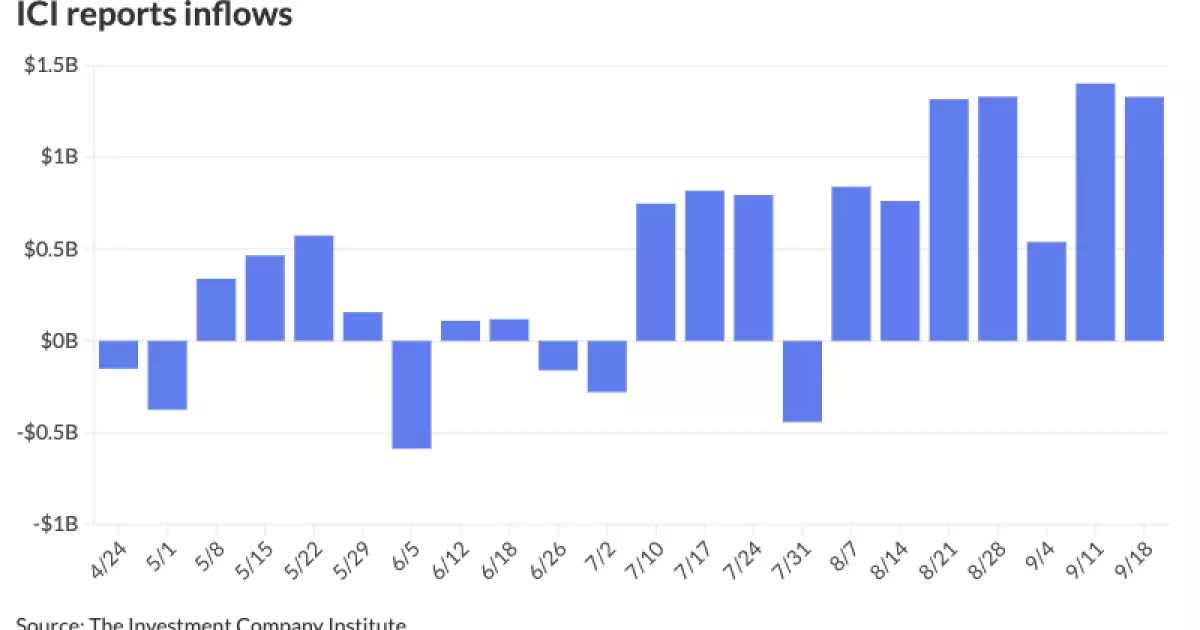The municipal bond market is currently experiencing a steadiness that has drawn attention from investors, coupled with fluctuations in broader financial markets. This period has witnessed significant capital inflows into municipal bond mutual funds, signifying a robust investor interest. According to reports by the Investment Company Institute, $1.329 billion flowed into these funds for the week ending September 18, showcasing a slight decrease from the $1.402 billion recorded the previous week. Additionally, exchange-traded funds also saw $55 million in inflows after an impressive $1.048 billion the week before. Such trends hint at a potential adjustment phase as the market bids farewell to the large reinvestment capital typical of the summer season.
Strategists at Appleton Partners have indicated that the inherent volatility can be expected to increase as the heavy reinvestment capital declines. They suggest that the market might face challenges linked to seasonal issuance spikes and shifts in investor sentiment. This scrutiny of inflow patterns underscores the delicate balance in the municipal market amidst upcoming economic changes.
Part of the ongoing activity within this market is fueled by a plethora of new bond issues, with nearly $14 billion in new supply announced just this past week. This activity represents a significant increase compared to previous months, where issuers are reportedly moving to secure financing ahead of potential market volatility linked to the upcoming presidential election on November 5. According to Jon Mondillo, global head of Fixed Income at abrdn, there is growing unease concerning fiscal uncertainties that may arise from the election results, prompting issuers to expedite their bond offerings.
The overarching concern about market volatility has led to an uptick in issuance, with the year-to-date tally reaching $357.913 billion—a 37.7% increase compared to 2023’s figures. The momentum for issuance in these weeks appears strategic, hinting at an anticipatory approach from municipalities and issuers alike.
Market analysts are noting a potential overflow of supply juxtaposed with diminished reinvestment demand, suggesting that yields might enter an upward trajectory. This scenario could create an advantageous landscape for municipal investors. Current yield ratios, especially the 10-year municipal-to-U.S. Treasury (Muni-UST) ratio hovering around 70%, suggest that the market dynamics are rich in opportunity. However, this ratio could potentially escalate if supply continues to outpace demand, further incentivizing municipal investment.
Comparatively, long-term ratios have shown historical declines. Ratios exceeding 100% have become a relic of the past, giving way to more modest levels around 85%-86% today. Mondillo’s take on this is critical; he emphasizes the need for Treasury yields to stabilize before ratios adjust to historical standards witnessed during elongated periods of low interest rates. This backdrop adds complexity for investors attempting to navigate the ebbs and flows of these ratios while formulating their investment strategies.
In recent weeks, several high-profile transactions in the primary market have demonstrated significant pricing adjustments, reflecting underlying investor sentiment. For instance, BofA Securities facilitated a $1.061 billion deal for the Port Authority of New York and New Jersey, with repriced yields adjusting across different maturities, revealing a nuanced approach to risk assessed by institutional buyers. Similarly, notable transactions involving salt river project bonds also experienced a slight yield increase, indicating responsive market behavior to investor demand and broader economic signals.
Other municipalities, such as the Cypress-Fairbanks Independent School District and the Charleston County Airport District, have also pursued financing, each restructuring their pricing effectively to capture market interest. These adjustments, amidst a contemplation of fiscal policies and local needs, exemplify the intricate dance of municipal financing, where market conditions pivot rapidly in reaction to external pressures.
As the municipal bond market heads toward the year’s close, stakeholders must remain alert to shifting dynamics. The potential loss of reinvestment capital, paired with increased supply volatility tied to seasonal issuance intervals, introduces uncertainty. However, savvy investors may find uncharted opportunities amidst these transitions.
The interplay between supply and investor appetite will likely dictate forthcoming trends. With the backdrop of impending elections and fluctuating economic conditions, the strategic maneuvering within the municipal landscape requires diligence from buyers and issuers alike. Ultimately, understanding these market subtleties will be crucial for stakeholders aiming to navigate the complexities of municipal bonds in a time of elevated volatility and shifting economic tides.

